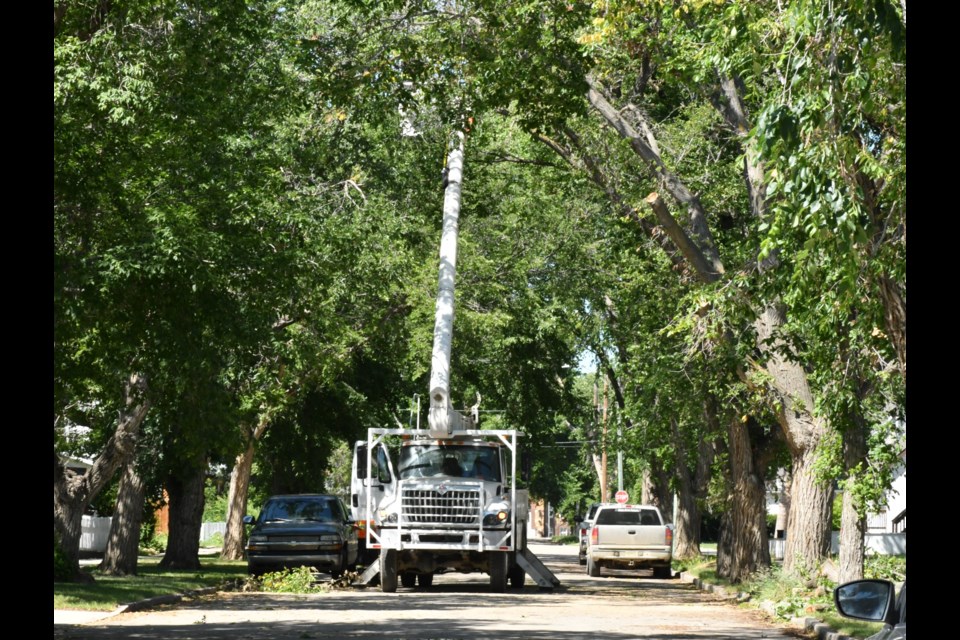MOOSE JAW — Resident Victoria McSween is a big supporter of trees and is “crazy about wildlife and nature,” so she was devastated when she discovered city crews chopping down nearby elm trees.
“I’m so upset with what I see going on. It’s just — I can’t even talk right,” McSween said recently.
The homeowner lives on the 1000 block of Sixth Avenue Northwest and said she spoke with the crew that was slicing down the trees. The workers told her that the “great big, huge” trees were infected and they were removing them, but she thought they looked perfectly healthy.
McSween has lived on that block for 30 years and believes some trees are 50 to 100 years old; she figures the one in front of her house is over a century old. She said she talks to her tree regularly, since experts say positively talking to plants helps them grow and maintains their health.
The other problem the resident had with the removal of the trees is that they are home to several animals, from raccoons to birds to crows to squirrels.
“Arbours — trees — are living beings and (the crews are) killing them,” McSween said, noting she cried when she saw what the workers were doing, all because of “a little beetle.”
“It broke my heart to see it happening,” she continued, adding she was amazed at the size of some of the tree stumps that workers removed.
Nijil Martin, the City of Moose Jaw’s forestry and horticulture supervisor, said cases of Dutch elm disease (DED) are up this year compared to last year. Furthermore, crews are seeing more symptoms of the disease as the month progresses.
So far this year, there have been 22 cases of DED on public and private lands. Last year, the city removed 103 infected trees, while it chopped down 85 in 2023.
City crews have removed infected trees in Crescent Park and the northwest quadrant, while they have spotted some trees in Wakamow Valley, added Martin. The city — in partnership with the valley authority — is monitoring that latter flora because the valley had only a few DED cases last year.
One main symptom of a tree infected with Dutch elm disease is that the leaves and branches at the top will turn yellow, wilt, and then turn brown, but will remain attached to the tree, the forestry and horticulture supervisor said. This is called “flagging.”
The only way to deal with Dutch elm disease is to remove the tree, including the stump, and haul it away for disposal, Martin added.
The city attempts to replace the trees it removes with new ones through its block planting program, Martin said. The program focuses on planting non-elm species like silver maple or oak, while it no longer recommends elm or poplars because of the risk of disease.
“We are trying to stay away from elm because the Dutch elm disease is spreading so much now, but we are also hoping to see the development of disease-resistant varieties in the future,” he continued, noting researchers have not created anything yet.
Martin discouraged homeowners from pruning their elm trees between April 1 and Aug. 31 — since the sap attracts the beetles — nor selling, buying or storing elm wood since that creates a safe space for the beetles. However, residents can prune their trees between September and March.
For additional information and help identifying elm trees, contact the city’s parks and recreation department at 306-694-4447 or use the parks and recreation links at www.moosejaw.ca.




